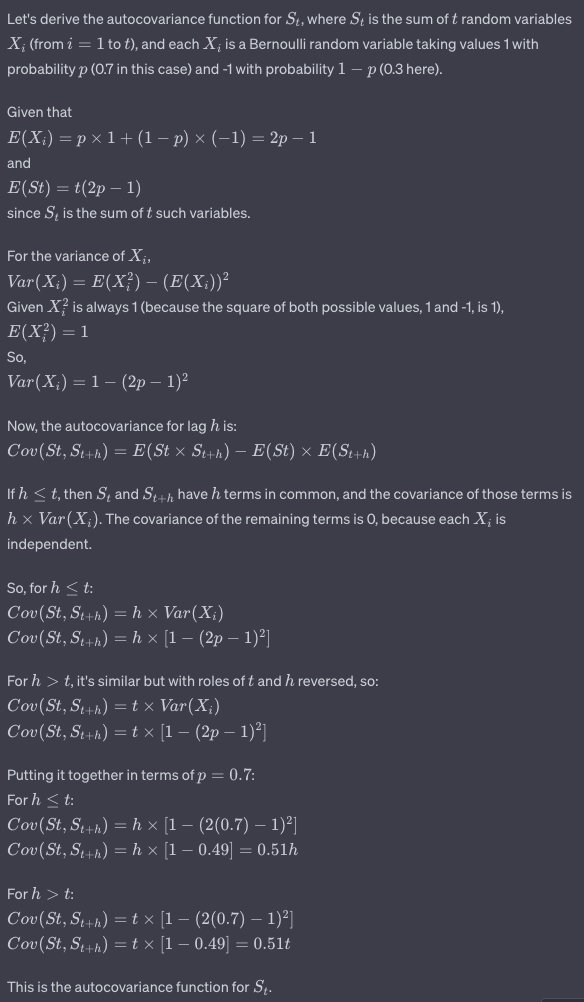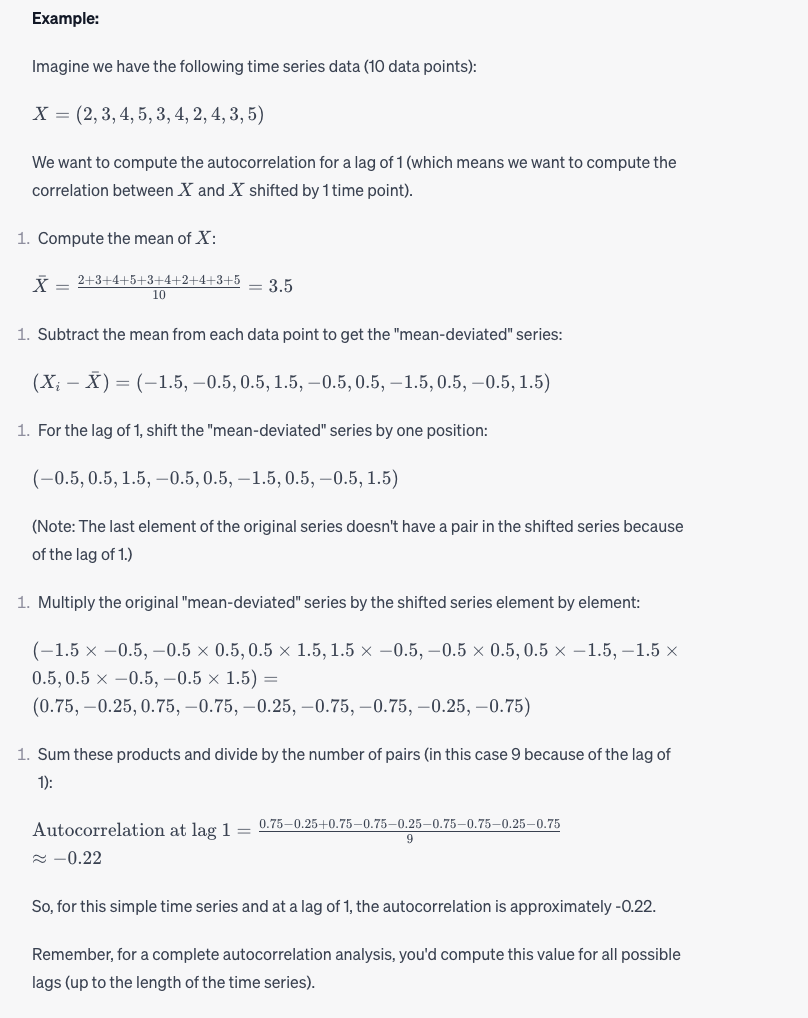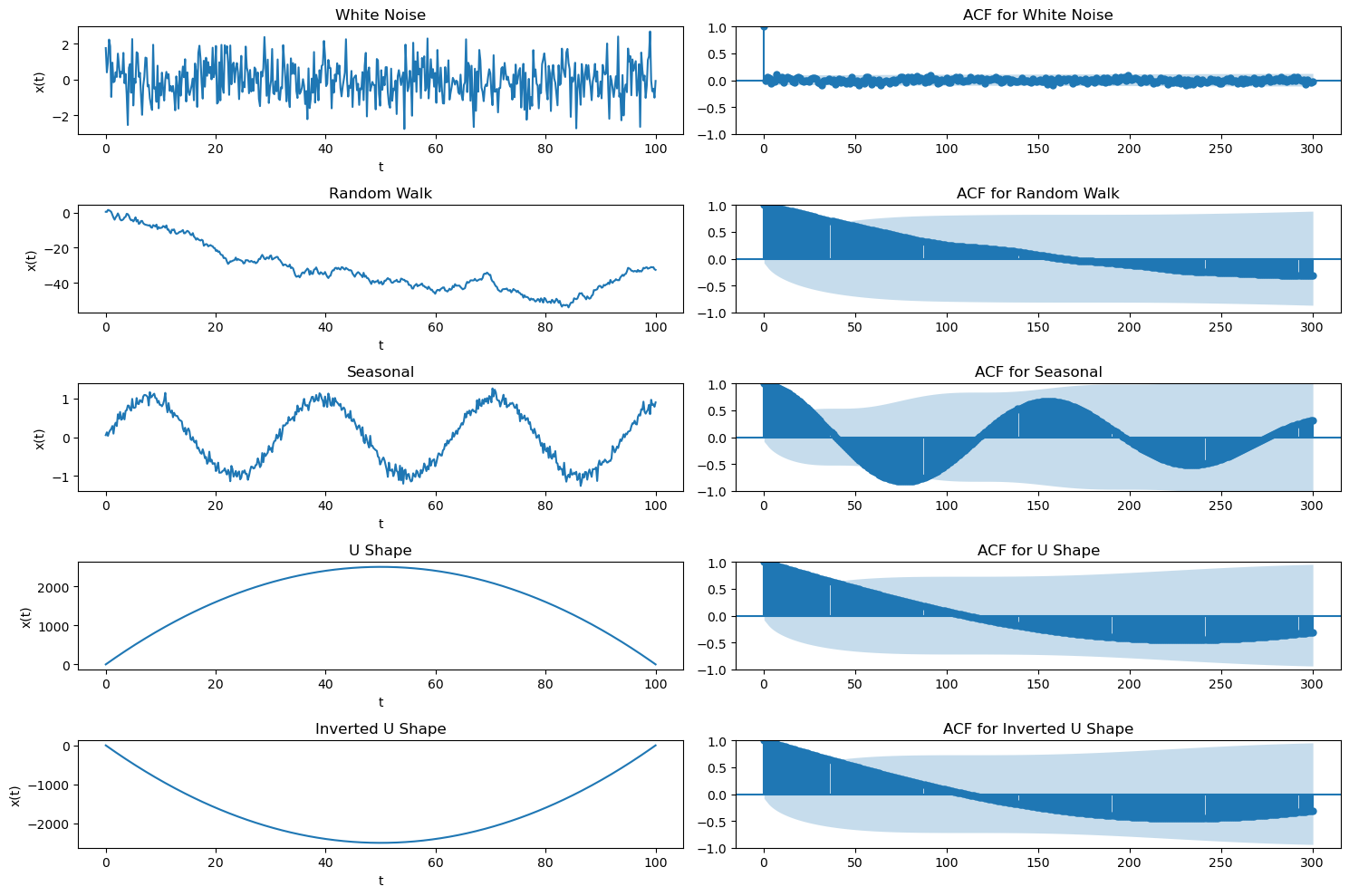Study List for Quiz 1: Time Series Analysis
L1 & L2 Topics Covered:
(a) Objectives of Time Series Analysis
- Definition: Understand what is meant by time series analysis.
- Visualization: How to visualize data measured over time.
- Key Components:
- Trend: Long-term movement in data.
- Seasonality: Patterns that repeat at regular intervals.
- Cycles: Long-term oscillations without a fixed period.
- Noise: The random variation in the series.
- Forecasting: Using previous values to predict future ones.
(b) Basic EDA (Exploratory Data Analysis)
- Time series plot: Understand how to plot data over time.
- MA Smoothing (Moving Average):
- Definition of MA smoothing.
- Why and how is it used in time series analysis?
- Classical Decomposition:
- Breakdown into Trend, Seasonal, and Residual components.
- Understand how to interpret the components.
(c) ARIMA Family for Modeling Time Series Data
i. Autocovariance and Autocorrelation
- Definitions:
- Autocovariance: How two points at different times but on the same series covary as the time lag, h, changes.
- Autocorrelation: The linear dependency or correlation between two points on the same series observed at different times with time lag h.
- Importance: Why are these measurements crucial for time series analysis?
ii. (Weakly) Stationary
- Definition: Understand what it means for a time series to be (weakly) stationary.
- Expected Value Independence: �(��)E(Xt) is independent of t.
- Variance Independence: Var(��Xt) is independent of t.
- Covariance with lag h Independence: �(ℎ)=cov(��+ℎ,��)γ(h)=cov(Xt+h,Xt) is independent of t.
- Importance: Why stationary time series are easier to model and the significance of modeling stationary series first.
iii. Detecting Stationary Time Series
-
Time Series Plot: Using visual methods to detect stationarity.
-
Sample Estimate of ACF (ACF Plot):
- Understand how to read an ACF plot.
- Recognize patterns in ACF that suggest stationarity.
-
Test for Stationarity: ADF Test (Augmented Dickey-Fuller):
- Understand the basics of the ADF test.
- How it’s used to determine if a time series is stationary.
-
Identification:
- Be able to identify ACF plots for stationary time series.
- Recognize data with specific patterns suggesting stationarity or non-stationarity.
-
- Trend and Seasonality: Non-stationary time series often exhibit trends or seasonality. For instance, an upward trend would result in a high autocorrelation because values that are close in time would be close in value too. Similarly, if there’s a seasonality (like daily, monthly, or yearly patterns), you’d see spikes at regular intervals in the ACF plot.
-
Significance Level: It’s not just the existence of spikes in the ACF plot that matters, but whether those spikes are statistically significant. In many ACF plots, a significance boundary (often represented by horizontal dashed lines) is included. Correlations outside of these boundaries are considered statistically significant.
-
Other Indicators: While the ACF is a useful tool, it’s best used in conjunction with other tests and plots, such as the Augmented Dickey-Fuller test or the KPSS test, to test the stationarity of a time series. Additionally, the partial autocorrelation function (PACF) plot can give insights into the order of autoregression if ARIMA modeling is being considered.
- dick test:
-
- H0: The time series has a unit root (i.e., it is non-stationary).
-
- �1H1: The time series does not have a unit root (i.e., it is stationary).
- If the
ADF Statisticis less than the critical value at the 5% significance level (often it’s around -2.86, but it can vary based on sample size), and if the p-value is less than 0.05, then we would reject the null hypothesis and conclude that the series is stationary.
- dick test:
In summary, while a “wavy” ACF plot that doesn’t die out quickly suggests non-stationarity, it’s always a good idea to use multiple methods and tests to confirm your observations and decisions about a time series.


